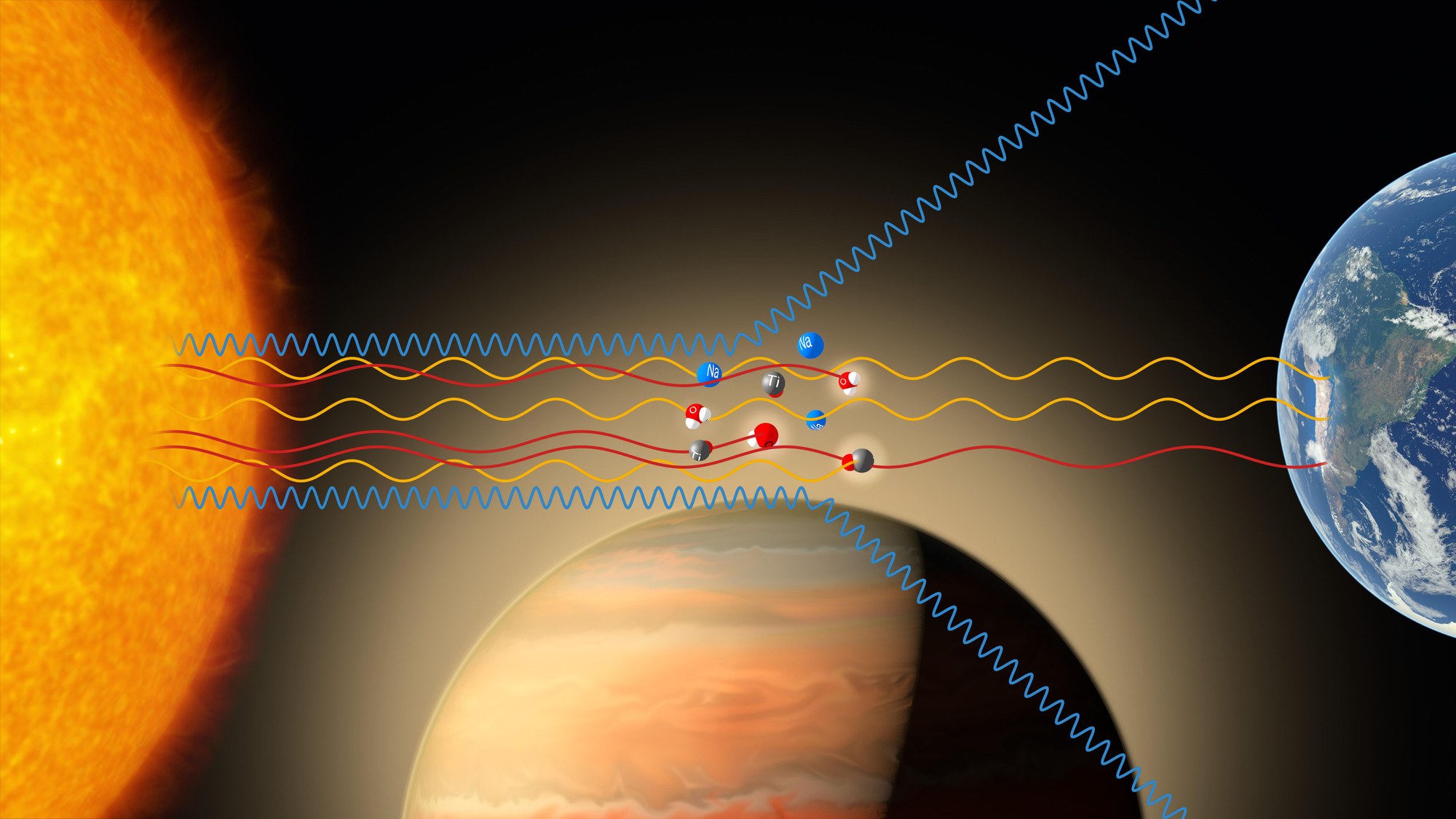Analysis of the starlight through the atmosphere
Analysis of the starlight through the atmosphere
When WASP-19b passes in front of its parent star, a portion of the starlight passes through the planet’s atmosphere, changing its wavelength and intensity. These fine ‘fingerprints’ in the light that reaches Earth can be recorded with highly sensitive measuring devices. Using the FORS2 instrument at the Very Large Telescope (VLT) of the European Southern Observatory (ESO), a team of astronomers has been investigating the atmosphere of WASP-19b over a period of two years, and has found that the atmosphere contains small amounts of titanium oxide, water and traces of sodium in addition to a planetary envelope and highly scattering haze layer.

